15 Best Live Streaming Encoder Software + Hardware Solutions
Live streaming’s popularity has steadily risen, especially after the covid-19 pandemic. On the other hand, viewers’ expectations regarding high-quality content and an excellent viewing experience have also been linear as more and more viewing choices have become readily available.
One primary factor that can make or break your audience’s experience is the quality of your live stream. Lagging video and shaky audio becomes a distraction from the message you’re trying to share. That is why you need a live streaming encoder software that can improve your stream’s quality.
Encoding your video content, which is converting RAW video files into digital ones, is one of the best things you can do to maintain professional quality. That requires a dedicated live streaming encoder, which can come from hardware and software.
Be it live streaming or video on demand, streaming encoders play a crucial role in the end experience you deliver to your audience. In this post, we’ll talk about what exactly a streaming encoder is, what purpose it serves, and some processes related to encoding.
To wrap up, we’ll compare the best video live streaming encoders on the market so that you can choose the best encoding software for your needs.
Table of Contents
- What is a Live Streaming Encoder?
- Hardware vs. Software Encoders
- Encoding vs. Codecs
- Encoding vs. Transcoding vs. Decoding
- The 15 Best Live Streaming Encoders: A Comparison
- How to Choose the Best Encoder for Streaming
- FAQs
- Conclusion
What is a Live Streaming Encoder?
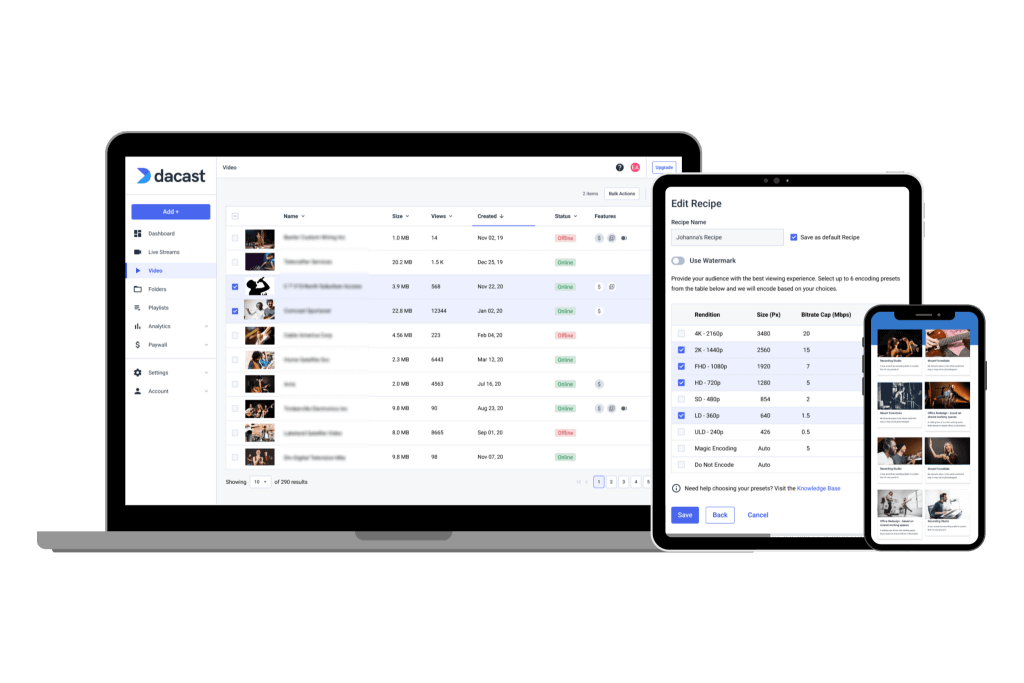

A live video streaming encoder is a tool that converts video content into a different format. The purpose of encoding a video is to create a digital copy of your own video source that can be transmitted over the internet. Digital video content can be embedded or streamed live right on your website.
Live streaming is very time-sensitive, requiring an encoder capable of processing the video feed in real-time. You need a video encoder for streaming.
Broadcasters have the option to choose between a hardware or software encoder. Which way you go will largely depend on the purpose of your stream and what sort of budget you are working with.
Most professional broadcasters will go with a video hardware encoder, but since HD live streaming encoders come with a high price point, most beginner to mid-experienced broadcasters go with live streaming encoder software.
Hardware vs. Software Encoders
While hardware and software encoders are slightly different; they function similarly. Both kinds of HD live streaming encoders take RAW video files and convert them into digital files, allowing you to stream video content online.
The main difference that sets hardware and software encoders apart—and the characteristic that allows video hardware encoders to perform more effectively—is that hardware encoding devices have the sole purpose of encoding. Software encoders work with your computer’s operating system, so encoding isn’t the primary function. Software encoders are doing additional work beyond encoding your videos.
Highly advanced streaming setups often require the support of a video hardware encoder. Still, due to the high price point, most beginner to mid-experienced broadcasters will go with live streaming encoder software. In addition to the affordability, a software encoder may be a better fit for basic to mid-level streaming setups since they are often easier to use.
Of course, the difference in performance capabilities is reflected in the price tag. Hardware HD live streaming encoders run upwards of $600 to $1000. Encoder software is often less than $100 and can be found by some providers for free. The price for HD video live streaming encoders varies based on the professional level of the encoder.
The bottom line is that video hardware encoders are best suited for experienced, professional broadcasters, and software hardware encoders tend to work well for beginner broadcasters. It is natural to use both hardware encoders and software encoders as you grow as a broadcaster.
Encoding vs. Codecs
Although there is a distinction between the two, the terms “codec” and “encoder” are often used interchangeably.
There is a bit of overlap between encoders and codecs. While encoders serve the sole purpose of encoding, codecs are designed to encode and decode.
Codec is short for “coder-decoder,” and it encodes a video for storage and decodes for broadcast. Often, the term “encoder” is used to describe hardware or software codec.
Transcoding and encoding are often misused interchangeably. Rather than converting the format of a video, video transcoding converts a video to a smaller size, making your videos ready for online transmission.
The purpose of transcoding a video is so that your viewers can watch the video in the best size with their internet speed. For example, somebody with a slower internet connection would watch your video in lower resolution to minimize buffering. That ensures that each viewer gets the best viewing experience.
There is an overlap in transcoding and encoding tools. Some live streaming encoders have transcoding and encoding capabilities only, and some transcoders have encoding capabilities.
Cloud transcoding is typically considered a simple alternative to a hardware encoder. While a hardware encoder converts and stores multiple versions of one video, cloud video transcoders convert and broadcast each version as it’s created.
Encoding vs. Transcoding vs. Decoding
Encoding, transcoding, and decoding are all important in the video live streaming process. However, they’re all applicable at different stages in a video’s journey and mean completely different things.
Let’s try to understand how they’re all different.
Encoding
As mentioned earlier, encoding is the process of converting a raw video file into a digital format and compressing it. This is done so it can be transmitted digitally from your video capture device to the viewers’ devices.
The hardware or software that does this is called an encoder, which plays a crucial role in helping you live stream your video content.
In a nutshell, encoders convert analog signals into digital ones.
Transcoding
Unlike encoding, transcoding only deals with digital signals. Transcoding is the process where a particular digital video stream is first decoded and then alterations are made to it. The decoded stream is encoded again before it’s delivered to the viewer.
For instance, a 1080p live stream could be decoded and then re-encoded to become a 480p stream for the viewers. This way, they can watch the same stream at a lower video quality.
The stream, however, remains a digital one throughout the process.
In simple terms, transcoding involves decoding and encoding one after the other, but both the input and output are digital.
Decoding
The decoding process does exactly the opposite of what encoding does. In decoding, the incoming stream is a digital one that’s then converted back into its raw analog format so the viewers can view the video stream.
This decoding process happens on the viewers’ devices and enables them to watch your live stream.
The 15 Best Live Streaming Encoders: A Comparison
There are several live streaming encoders available today. Each is equipped with unique features and functionality at different price points.
To determine which is the right video streaming encoder, you have to consider your unique goals and needs. As you compare video encoders for live streaming, you’ll want to ask yourself:
- Is the encoder compatible with my streaming platform?
- What features does the encoder provide? Is it the best option for my broadcasting needs?
- What’s my budget?
Keeping those questions in mind, let’s explore the top video encoders for major streaming platforms. In this article, we’ve reviewed the top live streaming hardware and software encoders on the market today so you can choose the best streaming video encoder software for your needs. The list also includes both free and paid encoders, so you can choose one based on your encoder budget.
1. Wirecast
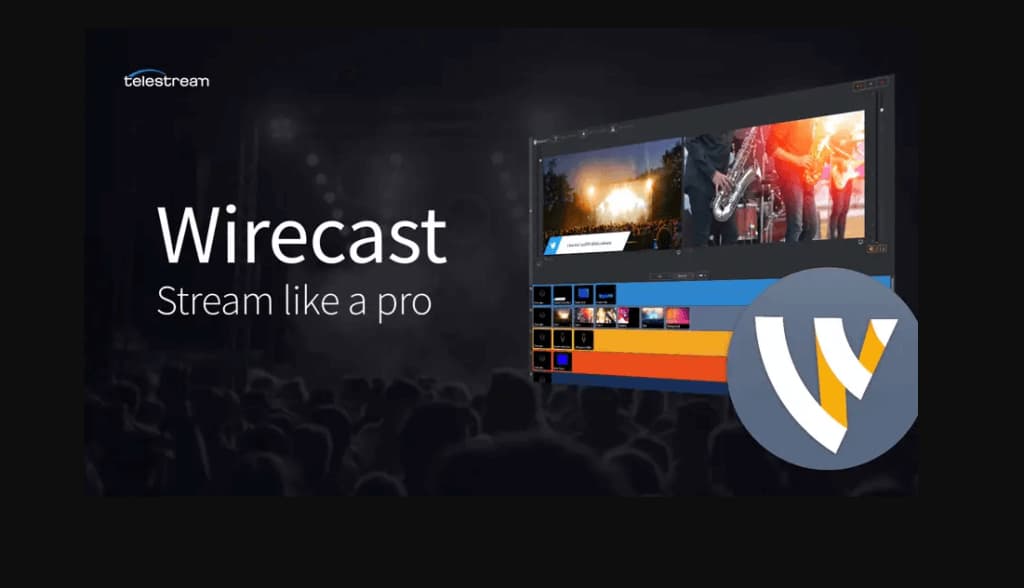

Wirecast is an accessible, capable encoding software from the company Telestream. It’s available on Windows PCs and Macs. Wirecast includes regular updates and a wide range of features, from instant replay to integrated video conferencing. Wirecast is available in two versions: Studio and Pro, which includes additional functionality.
Basic Functionality:
Wirecast supports live video compositing via a “layers” architecture similar to many graphics programs. The encoder facilitates live switching, picture-in-picture composition, titles, audio delay, and many other fine-tuning compositional elements.
Wirecast’s streaming encoder software makes it easy to incorporate pre-recorded video content into your broadcast. It also supports the encoding of HD and SD sources for streams broadcast simultaneously to multiple servers and platforms.
The Wirecast Pro enhanced program adds several other specialized features, including:
- Replay
- Live scoreboards
- Virtual 3D
- Use of IP cameras and web streams
- 8-track audio output
These advanced features of Wirecast Pro make it a better choice than the basic Wirecast program for most live-streamed events. With all those features, Wirecast’s biggest downside may be the price. To start, you can download a free trial version of the basic software.
Key Features:
- Input sources from cameras, mics, webcams, IP cameras, capture cards, and desktops
- Ideal for sports: instant replay, scoreboards, clocks, and timers
- The free wireless camera app allows you to use any iOS device as a video source
- NDI support
- Graphics and titling tool
- Audio mixer and up to 8 audio tracks
- Built-in video conference tool
- Stream to more than one destination simultaneously
- Support for MIDI hardware controllers
- Stream and record simultaneously, with re-stream and live caption options
- Multiple bitrate streaming
- Integrates with Facebook Live and Twitter for sharing comments on-screen
- Includes instant replay, scoreboard, and timers for sports
- Free wireless camera app turns iOS devices into mobile live video sources
- Stream to multiple destinations simultaneously
- Integrated video chat via “Wirecast Rendezvous”
- Local program output
Pros:
- Easy-to-use, user-friendly platform
- Compatible with most popular operating systems
- Fully loaded with valuable features
Cons:
- High price point
- Many features are locked in the “Studio” version
- It consumes a lot of computer memory
Pricing:
The software comes in two versions:
- Wirecast Studio for enhanced live production & streaming: $24.92/month
- Wirecast Pro for advanced live show and streaming: $33.25 which also comes with a free trial
The latest version of Wirecast is 16.4. It is the newest complete version and was released in June 2024. It features several enhancements and fixes, including FBLive polling, a rewritten WebStream plugin, and Virtual Camera improvements. You can check out its tech specs here to know more about it.
2. Open Broadcaster Studio (OBS)
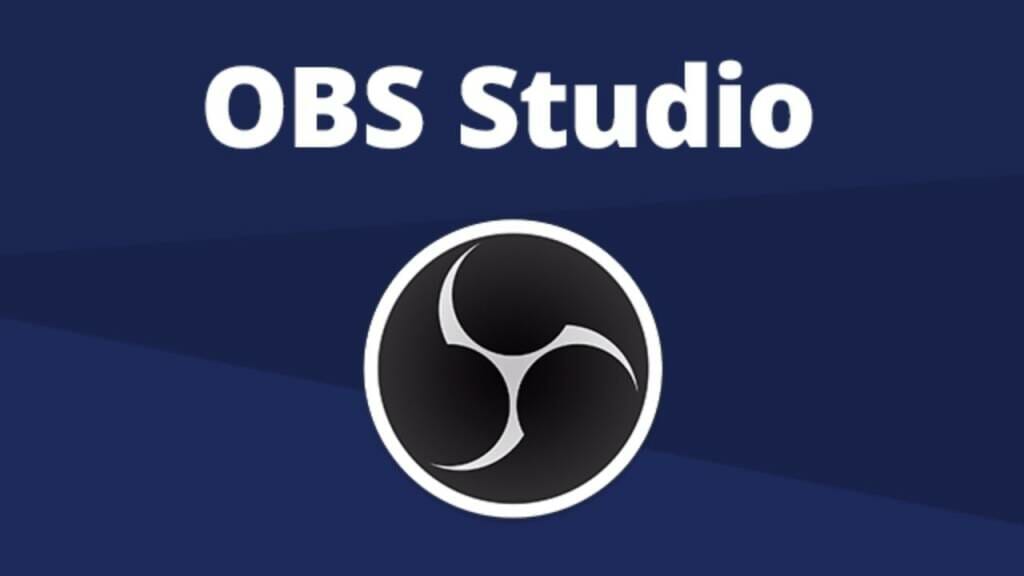

OBS Studio is a free and open-source option that’s excellent for beginning live streamers. It’s expandable with various plugins and has a robust community for support and questions. It is supported on Mac, Windows, and Linux PCs.
Formerly known as Open Broadcaster Studio, it is an open-source platform with encoding capabilities. This software encoder and comparison are based on the latest OBS Studio Version 31.0.1. This professional video streaming and broadcasting software is available for macOS 10.13 or newer, and Windows 8.1, 10, and 11 operating systems. For the Linux version, FFmpeg is required.
Basic Functionality:
OBS Studio offers many great features for new broadcasters just getting the hang of live streaming. The software has a set of OBS-specific settings and system requirements to ensure the most optimal live broadcasting experience.
Advanced features of this streaming encoder software include:
- Real-time video/audio capturing and mixing
- Unlimited number of scenes and custom transitions
- Intuitive audio mixer
- Modular “Dock” UI
Key Features:
- HLS Live streaming and recording functionality
- Audio and video mixing, filters, and transitions
- Support for hotkeys
- Chroma key/green screen support
- Scenes allow you to prepare overlays in advance for rapid switching
- Support for a wide range of video, audio, and image sources, as well as screenshots
- Expandable via plugins to add NDI functionality, remote control via WebSockets, advanced scene switching, and more
- One notable negative is that OBS Studio does not offer multi-bitrate streaming
- Detailed wiki and highly active user forum for support/help. Many YouTube tutorials are available as well
- Real-time video/audio capturing and mixing
- Unlimited number of scenes and custom transitions
- Intuitive audio mixer
- Modular “Dock” UI
Pros:
- Free to use
- Works with most OVPs
- Works with Windows 8.1,10, and 11; macOS 10.13+; Ubuntu 18.04 and newer for Linux. However, FFmpeg is required.
- It is open-source for ongoing development and crowdsourced improvements
- Great for beginners
Cons:
- Lack of detailed guidance and support
- Fundamental compatibility with macOS
- Very taxing on the CPU and memory
Pricing:
OBS Studio is free to use for everyone and has a working integration with Dacast. Dacast has developed a customized version of this video encoder software. See for yourself in this tutorial video.
OBS Studio is best used as an encoding software and a professional online video platform. Check out our how-to live stream with the OBS Studio video tutorial for more information.
3. VidBlasterX
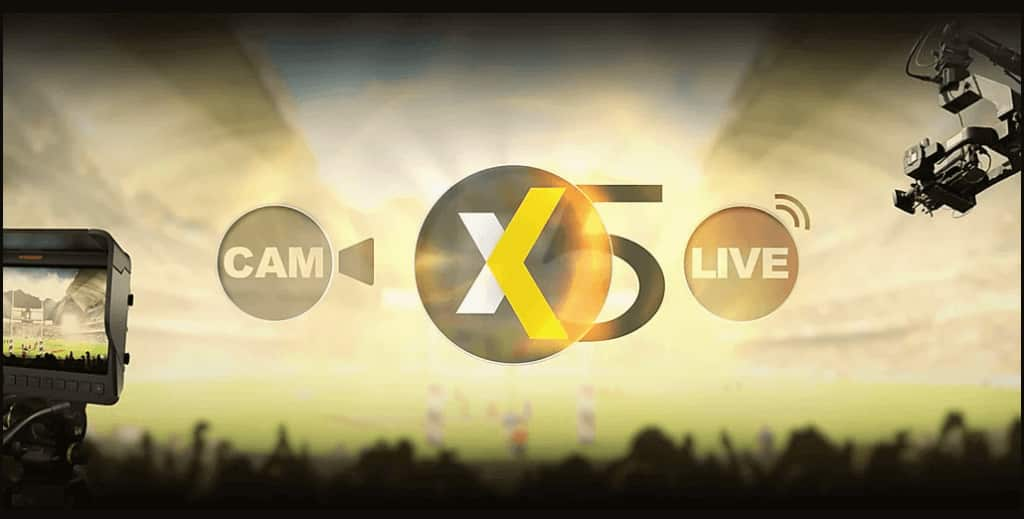

Like Wirecast, VidBlasterX is a professional-grade streaming encoder software. VidBlasterX is also one of the best encoders for YouTube.
This company offers three packages: VidblasterX Home, VidBlasterX Studio, and VidBlasterX Broadcast. The main difference between each version is the number of modules each supports. Each successive module also adds additional advanced features for professional broadcasters.
VidBlasterX Home is an essential product. It supports up to seven modules. VidBlasterX Studio has several features for studio production of videos (hence the name) and allows for more versatile videos. The Studio version supports HD and television-quality full-screen output and community support.
VidBlasterX Broadcast incorporates all the features of VidBlaster Studio, adds more module capacity, and is recommended for professional broadcast studios. With Broadcast, you get direct email support from the developer.
The Broadcast edition also supports UDP streaming, multiple streaming sources, and recorder modules in a single profile, and includes priority support.
Basic Functionality:
VidBlasterX is an encoding software organized into a series of modules, which can be added, removed, and rearranged on multiple screens as needed.
Key Features:
- Modular user interface
- Includes macro and scripting functionality to automate or hot-key actions
- Supports overlays and lower thirds
- Chroma key support
- Live streaming and recording up to 4K resolution
- Compatible with social media platforms and most OVPs (including Dacast)
- Audio mixer
- Multiview support
Pros:
- Has plans for a wide range of budgets
- Feature-rich
- Easily customizable
Cons:
- Not compatible with macOS
- Not well-suited for inexperienced live streamers
- Slightly complex
Pricing:
VidBlasterX is available in three versions. Each of the following options is priced with an annual subscription model:
- Studio: $99/year; supports 25 modules.
- Broadcast: $999/year; supports 100 modules. This version also supports multiple recorder & streamer modules in a single profile.
- Broadcast 4K UHD: $4,995/year; Broadcast 4K edition also supports UHD & 4K video output resolutions. The (free) trial edition is equal to the Broadcast 4K edition with a watermark added to all output channels
The difference between the versions is the number of simultaneously active modules you can have.
The Home editions support up to seven modules, enough for basic live streaming. The Studio edition supports up to 25 modules, and the Broadcast edition supports 50. These higher limits allow professional users with multiple monitors to set up and oversee complex workflows.
The Broadcast edition also supports UDP streaming, multiple streaming sources, and recorder modules in a single profile and includes priority support.
4. vMix


vMix is another 4K live streaming encoder. This Windows-specific live video streaming encoder software has all the tools that broadcasters need to support their streaming setup.
This Australian-based RTSP encoder software is a strong option in terms of encoding software.
The latest version of the Windows-specific software is 28.0.0.36 and includes an upgrade to a free 60-day trial of vMix PRO for download. While vMix 24 is for Windows only, the software can be installed on a Mac via Boot Camp if the machine has a Windows partition.
Basic Functionality:
vMix offers an array of video streaming tool plans. They offer a wide range of features at different price points, so there are options for broadcasters of every level of expertise. vMix offers robust encoding services.
Key Features:
- Support for a wide range of inputs including webcams, cameras, capture cards, DVDs, sound cards, playlists, photos, PPT presentations, and more
- NDI support
- Chroma key and virtual sets
- Built-in titling tool that supports animation via XAML
- Live streaming platform integrations (including with the Dacast streaming platform)
- vMix Social allows you to pull and display content from popular social media platforms
- Instant replay, slow motion, and scoreboards
- Training videos available
- vMix “reference systems” ease the difficulty of building a custom live production system
Pros:
- Many powerful features
- Reliable customer support
- Professional platform
- Added speed for specialized codecs
Cons:
- A high price point for most inclusive plans
- It only works with Windows
- A bit tricky to use
Pricing:
vMix is available for Windows computers only, and it comes in five different editions. Each purchase never expires, and all editions include free updates for a year. The versions are:
- Basic HD: $60, which supports four inputs (up to 3 camera/NDI) and video up to Full HD 1920×1080 resolution
- HD: $350, which supports 1,000 inputs, adds vMix call functionality, four overlay channels, and supports full HD video in 1920×1080 resolution
- 4K: $700, which supports 1,000 inputs, 4K resolution video (4096 x 2160), PTZ control, two recorders, instant replay, 4 SRT outputs, and much more
- Pro: $1200, which also supports 1,000 inputs, includes all 4K features and 2 records, plus up to 8 callers, up to 4 cameras for instant replay, and 4 SRT outputs
The following is a subscription license that includes, and is charged every month:
- MAX $50/month, which also supports 1,000 inputs, 1,000 NDI inputs, and includes all 4K resolution video (4096 x 2160), PTZ control, 2 recorders, instant replay, 4 SRT outputs
vMix also offers a 60-day free trial and has all the features of vMix Pro, including the ability to use resolutions greater than HD such as 4K, mainly to ensure vMix supports your computer hardware and work with it before purchasing. It is a great perk, as most encoding software offers only up to a 30-day free trial.
5. LiveU Solo
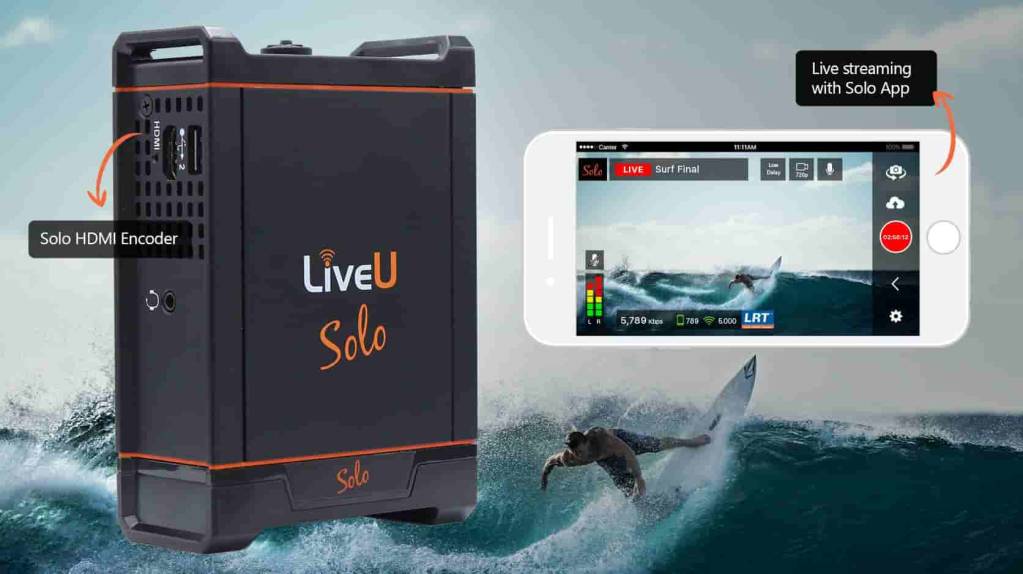

The LiveU Solo is a highly capable hardware encoder for live streaming that is well-suited for encoding and producing remote streams. It is a powerful mobile device that supports up to 5G 4K HEVC streaming.
This 4K live streaming hardware encoder is globally renowned and has contributed to massive streams, including Presidential events, World Cups, Olympic events, Super Bowls, and more. It is one of the market’s top 4K live streaming encoder solutions.
The hardware encoder offers up to 20 Mbps streaming and combines with up to six IP connections to ensure uninterrupted live streaming experiences for your viewers. This is something that sets it apart from software encoders like Open Broadcaster Studio (OBS), vMix, and Wirecast. It also offers optional HEVC/H.265 encoding that enables you to get the same quality for half the bandwidth.
Key Features:
- Seamless integration with modems and cellular data
- Robust remote streaming
- Lifetime support
- Responsive bandwidth consumption for uninterrupted streaming
- Boost up to three connections at once
- Easy set-up
- Preview display is a handy feature
- Long battery life, 2+ hours
Pros:
- Suitable for live event streaming
- Team friendly
- Some issues with streaming to social media platforms
- Supports network bonding
- Geared towards remote streaming
- Great customer service and user support
- High-quality video
Cons:
- Can get a bit complicated
- Access to some basic features requires a hardware upgrade
- Expensive upgrades
- UI could use some improvement
- Bonding service needs separate purchasing
- Doesn’t support USB modems well
Pricing:
LiveU Solo’s pricing is based on location. In the USA, the device costs $995. Please check out their pricing page to see how much this video encoder for live streaming costs in your region.
6. Teradek
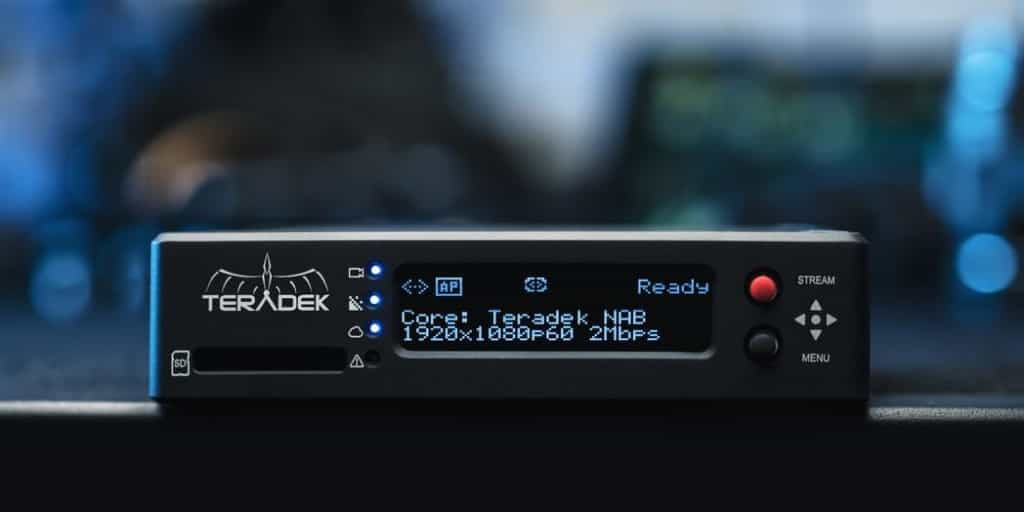

TeraDek offers compact encoding hardware called Prism that is perfect for live streaming on the move. Unlike many other hardware encoders on the market, their products are light and sleek. Some are built with portable chassis for exceptional remote location streaming experiences.
Basic Functionality
TeraDek’s hardware encoding products are designed for portability and streaming on the move.
Key Features
- Sleek design
- Top-tier video quality
- High-quality wireless transmission
- Extended range
- HDR and color accuracy
Pros
- Designed to live stream on the go
- High-quality video
- Compact and portable
- User-friendly setup
Cons
- High price point
- It may not be as accessible for users working with lower-end equipment
- Battery life can sometimes be a limitation
Pricing
Pricing for Teradek products varies widely depending on the model and its features:
- Teradek Spark 4K: typically costs around $1,190
- Prism 4K: starts at $1,795.
7. TriCaster
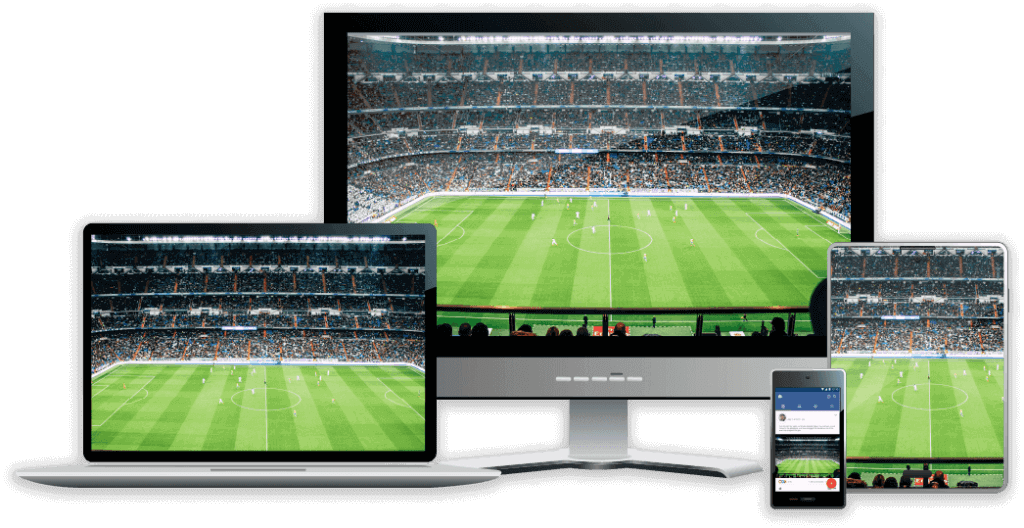

TriCaster is an innovative hardware video encoder recently acquired by Vizrt.com, offering broadcasters professional-grade tools for encoding and video production. It is considered a high-ticket encoding hardware designed for advanced streamers. Its capabilities extend beyond encoding.
Basic Functionality
TriCaster hardware encoding solutions are designed to connect to video-capturing devices to encode video content in real-time.
Key Features
- Real-time hardware encoding for live streaming
- Recording functions
- Video and audio mixing tools
Pros
- On the spot moving graphic processing
- Recording for video on demand (VOD) playback
- Mixing tools
- Real-time encoding for live streaming
Cons
- Expensive
- Requires expensive accessories to use
- Steep learning curve
- Bulky hardware
Pricing
The cost of TriCaster encoders ranges from roughly $5,000 to $18,000.
8. Niagara Video
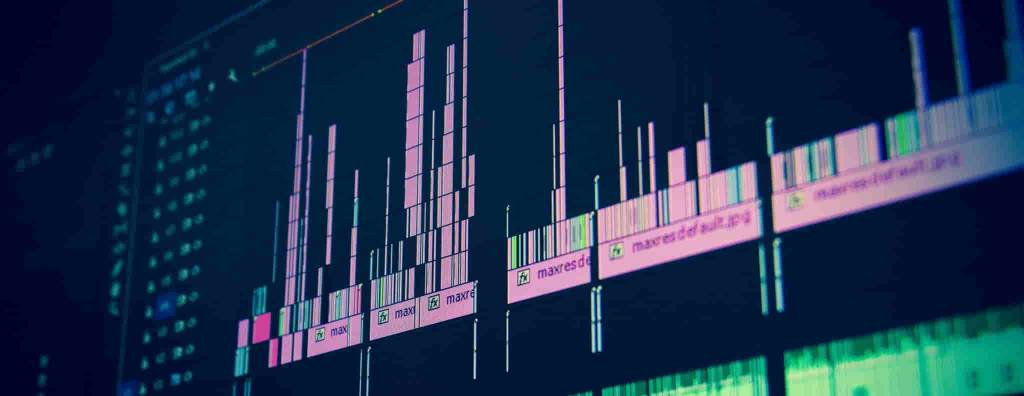

Niagara Video is an encoding brand through and through. They offer nearly 20 different encoding hardware options, in addition to a few different software solutions. It has been around for nearly two decades. They have been at the forefront of encoding, and are often considered trailblazers in the industry.
Basic Functionality
These tools are built for both encoding and transcoding. Most of their tools are hardware encoders designed for professional podcasting.
Key Features
- Versatile input and output options
- Low power consumption
- Compact design
- Support for multi-channel decoding and encoding
Pros
- Wide variety of encoding tools to choose from
- High-quality streaming
- Scalability
Cons
- No Pricing transparency
Pricing
Niagara Video’s pricing is typically not very transparent on their website, as they offer customized solutions based on the specific needs of each client. Their products are enterprise-level, so prices are often provided upon request or through direct consultation. You may need to contact them directly to get a quote for their video encoding and streaming hardware, as prices are likely to vary depending on features, volume, and specific use cases.
9. Resi


Founded in 2014, Resi is an end-to-end video broadcasting platform that is equipped with a variety of streaming tools. This company offers all of the tools that broadcasters need to get started with live streaming.
Basic Functionality:
Resi offers a variety of live streaming software in addition to some hardware offerings.
Key Features:
- End-to-end live streaming support
- Simulcasting capabilities
- Some encoding support
- Automation tools
- Cloud streaming
- Monitoring tools
Pros:
- Produces high-quality live streams
- Wide range of functionality
- Highly reliable
- Reliable support
Cons:
- Limitations on analytics
- Limitations on chat
- “Dated” interface
Pricing:
Interested broadcasters must fill out an inquiry form to get information on Resi’s pricing.
10. Magewell UltraStream


Magewell is a company that offers advanced streaming technology to support different parts of the streaming setup, including HDMI live streaming encoding. The Magewell UltraStream encoders are another great option for professional broadcasters.
What’s nice about this external video encoder is that Magewell offers great support for users, ranging from a thoroughly documented knowledge base to live customer support.
UltraStream mainly offers two products: UltraStream HDMI and UltraStream SDI. Both these are essentially the same with the exception of the input cable types. The hardware encoders work without any computer and that makes them worth the investment. You can easily stream to two platforms at a time with a bitrate of up to 4 Mbps.
You also get access to the UltraStream smartphone app for iOS and Android that enables you to easily set up the hardware encoder and also upgrade its firmware regularly.
Key Features:
- Computer-free streaming
- Can be controlled by remote devices if you choose
- SDI and HDMI inputs
- H.264 or HEVC video codecs
- Compatible with RTMP and RTMPS ingest
- Capable of RTSP streaming
- Video recording
- Supports simulcasting
- Supports mountainous multi-streaming
- Records stream onto USB drives
- Web UI enabled device configuration
Pros:
- Easy to use
- Many professional-grade features
- Connects to any internet connection (Ethernet, Wi-Fi, roaming)
- Reliable customers support
- Well-documented for easy use and troubleshooting
- Great for newbie broadcasters
Cons:
- No pricing transparency
- No backup power/battery supply
Pricing:
Magewell live streaming encoders are only available through verified Channel Partners. Contact your local Channel Partner for more information.
11. Matrox
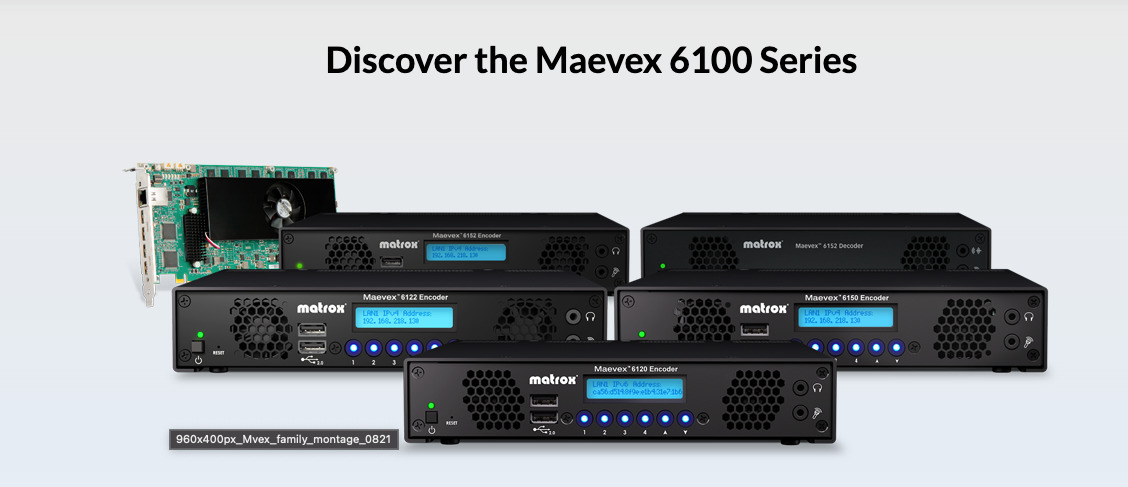

Matrox is a streaming technology company that offers a variety of tools for broadcasters, such as 4k live streaming encoder technology. This brand offers several hardware live streaming encoders, including Monarch HD Encoder Appliance, Maevex 6122 Dual 4K Encoder, and Maevex 6152 Quad 4K Encoder
The live streaming encoders from Matrox are highly capable, so they are well-suited for supporting professional streaming setups. It is a robust hardware encoder for streaming.
Key Features:
- Hardware encoders
- Live stream recording
- 4K encoding and decoding
- Uses H.264 codec
- Large collection of other streaming tools
- Low-latency encoding
- Up to 6 streaming protocols
- Great for streaming on the move
Pros:
- Capable of high-quality streaming
- Many different encoding options
- Dedicated software to support hardware encoders
- Travel-friendly
Cons:
- No pricing transparency
- Complicated array of features not best suited to beginners
Pricing:
Pricing for Matrox live streaming encoders is not available on the Matrox website. Interested broadcasters must inquire about pricing from a verified Matrox distributor.
12. OSX by Streambox


The Streambox OS X Software Encoder is a 4K live streaming encoder tool capable of 4K encoding necessary for producing high-quality live streams anywhere. It is equipped with a variety of professional tools that are designed to enhance the broadcasting experience.
The biggest downside of this software is that it is only compatible with macOS, so it is not an option for Windows users.
Key Features:
- High-quality streaming
- Low data consumption
- Multiple color profiles
- Multi-location video streaming
- Live-to-VOD archiving
- Reliable low-latency streaming
Pros:
- Works on any internet connection
- Saves money on bandwidth
- The software can be upgraded
Cons:
- Has particular system requirements
- Only works on macOS
Pricing:
OS X comes with Streambox Cloud subscriptions. However, there is no further pricing information on its website. For more information, you can contact Streambox directly
13. XSplit Broadcaster
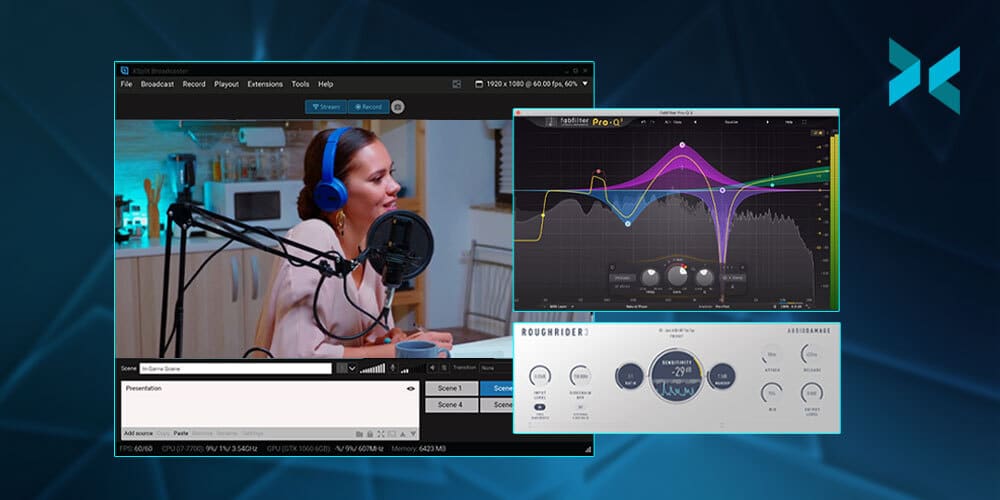

If you’re searching for the best encoder for live streaming, XSplit Broadcaster can be your choice. It is an all-in-one tool for content creation, streaming presentations, recording, and broadcasting live events. It’s a great platform that offers 4K streaming quality and high-quality live streaming encoding. This places it as a top contender for the best video encoder for streaming.
It offers unique features like chroma key, scene transitions, thumbnail scene preview, and up to 240 FPS.
XSplit Broadcaster is a popular streaming platform because it offers limitless customization options. To customize your live streams, all you have to do is drag, drop, and resize any media content of your choice. This includes GIFs, images, videos, and web pages.
Another great feature this platform offers is its native plugins and custom RTMP. With this, users can easily stream to top broadcast platforms while simultaneously recording multiple outputs.
That’s not all. You can also add various broadcast effects and animations to make your live streams more interesting. Its media liveshow function makes it easy to loop multiple images or videos for your BRB screen, which will help to keep your viewers engaged.
Key Features:
- Built-in audio mixer and DSP effects
- In-game HUD
- Supports streaming and recording to multiple outputs
- Noise suppression
- Gamepad visualizer and whiteboard
- NVIDIA encoding to enhance streaming performance
- Allows professional scene switching and scene previews
- Allows users to record multiple scenes at the same time to streamline post-production
Pros:
- Supports a wide range of integrations
- User-friendly interface
- Green screen
Cons:
- Limited features in the lower tiers
Pricing:
XSplit Broadcaster offers pricing plans in 2 tiers:
- VCam Premium: $8/month
- Broadcaster Premium: $15/month
14. StreamLabs


Another live streaming encoding software worth trying is StreamLabs. It’s a popular open-source software encoder among gamers and content creators. StreamLabs offers amazing customization options and supports integrations with a wide range of third-party platforms.
One of the features that makes StreamLabs stand out is its multi-stream function, which allows users to stream to various platforms. These platforms include YouTube, TikTok, Kick, Twitch, Trovo, and other RTMP connections.
If you’re a broadcaster who likes to play around with different themes, stream overlays, and sounds, you’ll find StreamLabs very helpful. It supports custom alerts for notifications from YouTube, Facebook, and Twitch. You can also create a custom tip page that matches your branding using its intuitive drag-and-drop builder.
StreamLabs goes beyond simply being a streaming platform and an encoding software. It offers on-demand printing and global shipping. Therefore, users can create and sell custom merch via their storefront using StreamLabs.
When it comes to audio, StreamLabs also offers multiple options. You can explore its expansive sound library to find various categories of sounds for your live streams. You can get access to free audio files for intermission, alerts, transmissions, intro, and outros.
Key Features:
- Fully customizable alerts
- A wide library of desktop overlays and themes
- Supports multiple webcams and collaborations
- Low latency
- Cross clip for creating short form video clips from livestream recordings
- Dual output
- Provides features for customizable polls, interactive games, and tip trackers
- Seamlessly integrates with Twitch, YouTube, and Facebook
- Chatbot to assist in live stream moderation
- Extensive chat filter options capable of filtering out caps, emotes, links, symbols, words, and paragraphs
Pros:
- Automatically optimizes codecs according to available bandwidths
- Supports dynamic bitrate streaming
- User-friendly interface
Cons:
- Watermark in the free plan
Pricing:
StreamLabs offers a free plan and a paid plan.
- StreamLabs Starter: Free
- StreamLabs Ultra: $27/month
15. Livestream Studio


Finally, we have LivestreamStudio by Vimeo, a live production platform and encoder that offers an extensive range of features. Livestream Studio supports multi-camera live production from desktops, webcams, Mevo camera, IOS devices, and android devices.
Livestream Studio provides a versatile live switcher that allows users to connect to a wide range of wired and wireless cameras.
With Livestream Studio’s layered broadcast graphics, you can easily add overlays of images, texts, and videos to your livestreams to make them more engaging. You can also edit these graphic overlays by distorting or cropping them according to your preferences.
Livestream Studio helps you broadcast high quality videos by providing color correction options. This feature particularly comes in handy when you want to create a uniform look for multi-camera productions.
You can easily use the color correction function to adjust the brightness, RGB, saturation, and contrast of your livestreams to your preferences.
If you’re a broadcaster who wants to produce live interviews, Livestream Studio will also suffice. As long as your guest uses a compatible browser and webcam, they can easily join your live broadcast.
Key Features:
- Media transitions and live switching
- Multi-stream to YouTube, Twitch, Facebook Live, Wowza, Akamai, and Periscope
- Mevo and Vimeo integration
- Built-in chroma key
- Connects to a wide range of external data sources
- Livestreaming for OTT
- Accepts imports in different media formats like AAC, MP3, MP4, and H.264
- Allows video scrubbing to enable you to find and trim video clips from your live streams
- End-to-end 4K multi-bitrate streaming
- Allows users to record and broadcast up to four videos simultaneously
- Stinger transitions with short, catchy animations
Pros:
- Intuitive interface
- Adaptive streaming
Cons:
- Pricing is on the high side
Pricing:
Livestream Studio offers three pricing options.
- Advanced: $65/seat/month, billed annually
- Enterprise: Custom pricing
- Vimeo OTT: Custom pricing
How to Choose the Best Encoder for Streaming
The live streaming encoder software you should choose greatly depends on the features you need to help you reach your goals. That said, no single live streaming encoder will be the perfect match for every broadcaster.
To identify which features are most important to you, take some time to think about the following questions:
- Is the encoder compatible with your streaming setup?
- What kind of computer will you use, and with what kind of operating system?
- How many camera feeds do you need to incorporate into your videos, and which camera will you use?
- What features does the encoder provide? Is it the best option for your broadcasting needs?
- What’s your budget?
- How big is your target audience?
- How much will you need to do in the way of studio effects or video editing?
- What resolution of video do you want to broadcast?
- What are the top requirements of your live streaming platform service?
- How much money do you want to spend? Is this a flexible or fixed price point for you or your business?
If you’re new to live streaming video, we recommend starting with Open Broadcaster Studio (OBS) to become familiar with how to stream live video on your website. After you get the basics down, you can upgrade later to a more powerful program if you like.
Open Broadcaster Studio (OBS) is the best option as it’s completely free to use and you can see the results without it impacting your budgets. Platforms like vMix and Wirecast are also great starting points, but will set your budget back by a little. Nonetheless, if you’ve got a wide audience, it might be worth investing in them when you’re starting out.
Overall, it’s important to ensure that any encoder streaming software you choose helps you meet all your goals for producing and broadcasting your video content.
FAQs
1. What is an encoder for live streaming?
In simple terms, a live video streaming encoder is a tool or device that converts your analog video signals into digital formats. The main purpose here is to make the video digital so that it can be transmitted over the internet from your video capture device to the viewers’ devices. The encoded videos are decoded at the viewers’ ends so they can watch the live stream.
2. Do I need an encoder for live streaming?
Yes, it’s important to have an encoder for live streaming. In fact, without one, you won’t be able to transfer your video stream directly from your camera to the viewers’ devices. Your analog video signals need to be converted into digital signals before they can be sent over the internet. And that’s exactly what an encoder does for you.
3. How much is encoder for live streaming?
Thankfully for broadcasters, encoders aren’t very costly. In fact, most encoder software are available for less than $100. You can even get some encoder software for free. If you’re using smartphones to live stream your videos, you won’t even need to invest in any encoding software as they would come built into the smartphone.
4. What is the best free stream encoder?
The best free video streaming encoder software out there is Open Broadcaster Studio. The platform is completely free to use and has some great advanced features for streaming, including functionality at lower internet speeds. However, it can be slightly daunting for newbies. But once you get the hang of it, the platform is easy to use.
5. What is the best software for encoding?
Some of the best software for encoding include:
- Wirecast
- Open Broadcaster Studio (OBS)
- VidBlaster
- vMix
- LiveU Solo
- Teradek
- TriCaster
- Niagara Video
- Resi
- Magewell Ultrastream
- XSplit Broadcaster
- Streamlabs
- Livestream Studio
Conclusion
Today’s broadcaster needs to deliver on multiple fronts, and having the right live streaming encoder can help you do that better and streamline your entire production operation.
The live streaming encoder that you choose ultimately plays a huge role in the quality of your live stream. When choosing one to operate your live stream, there are many options and live encoder configurations. Hardware encoders tend to produce better-quality live streams throughout. Although video encoders for live streaming software are easier to use and more cost-effective.
If you’re new to live streaming video, we recommend Dacast’s custom version of Open Broadcaster Studio (OBS) since it is free for our users and allows anyone to become familiar with how to stream live video on your website. After you get down to the basics, you can upgrade to a more powerful live streaming encoder tool if necessary.
Overall, it’s important to ensure that any live stream encoder software you choose, as with your hardware, your cameras, and your live streaming platform, allows you to meet our goals for producing and broadcasting your video content.
If you are looking for a unified streaming solution with both live and VOD streaming capabilities, give Dacast a try. Sign up for our 14-day free trial to test out all of our streaming tools. No credit card is required.
We hope this article has helped you to compare encoders for live streaming options for your business. Thanks for reading, and let us know your questions and feedback in the chat section below.

 Connect
Connect
 Events
Events Business
Business Organizations
Organizations Entertainment and Media
Entertainment and Media API
API Tools
Tools Learning Center
Learning Center Support
Support Support Articles
Support Articles